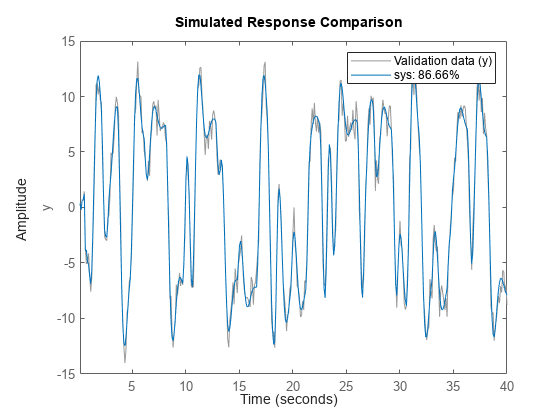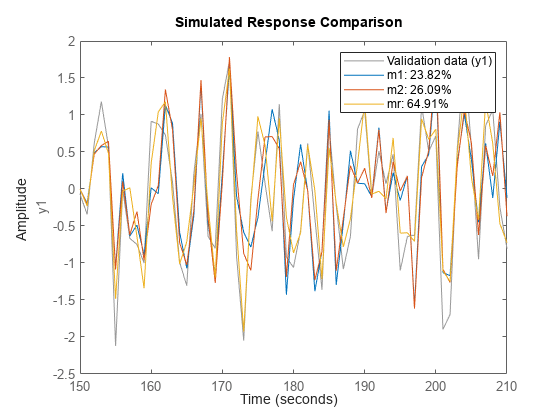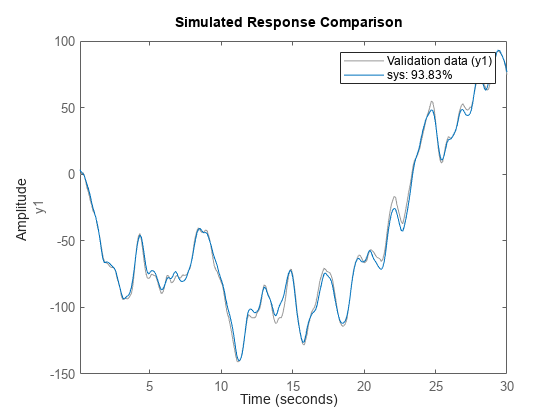polyest
Estimate polynomial model using time- or frequency-domain data
Syntax
Description
Estimate Polynomial Model
sys = polyest(tt,[na nb nc nd nf nk])sys using the data contained in the
variables of timetable tt. The software uses the first
Nu variables as inputs and the next Ny variables
as outputs, where Nu and Ny are determined from the
specified polynomial orders.
sys is of the form
A(q),
B(q), F(q),
C(q) and
D(q) are polynomial matrices.
u(t) is the input, and nk is
the input delay. y(t) is the output and
e(t) is the disturbance signal.
na, nb, nc,
nd, and nf are the orders of the
A(q), B(q),
C(q), D(q),
and F(q) polynomials, respectively.
To select specific input and output channels from tt, use
name-value syntax to set 'InputName' and
'OutputName' to the corresponding timetable variable names.
sys = polyest(___,Name,Value)Name,Value arguments. You can use this
syntax with any of the previous input-argument combinations.
Configure Initial Parameters
Specify Additional Estimation Options
Return Estimated Initial Conditions
[
returns the estimated initial conditions as an sys,ic] = polyest(___)initialCondition
object. Use this syntax if you plan to simulate or predict the model response using the
same estimation input data, then compare the response with the same estimation output
data. Incorporating the initial conditions yields a better match during the first part of
the simulation.
Examples
Input Arguments
Name-Value Arguments
Output Arguments
Tips
In most situations, all the polynomials of an identified polynomial model are not simultaneously active. Set one or more of the orders
na,nc,ndandnfto zero to simplify the model structure.For example, you can estimate an output-error (OE) model by specifying
na,ncandndas zero.Alternatively, you can use a dedicated estimating function for the simplified model structure. Linear polynomial estimation functions include
oe,bj,arxandarmax.
Alternatives
To estimate a polynomial model using time-series data, use
ar.If the structure of the estimated polynomial model is known, that is, you know which polynomials will be active, then use the appropriate dedicated estimating function. For examples, for an ARX model, use
arx. Other polynomial model estimating functions includeoe,armax, andbj.To estimate a continuous-time transfer function, use
tfest. You can also useoe, but only with continuous-time frequency-domain data.



